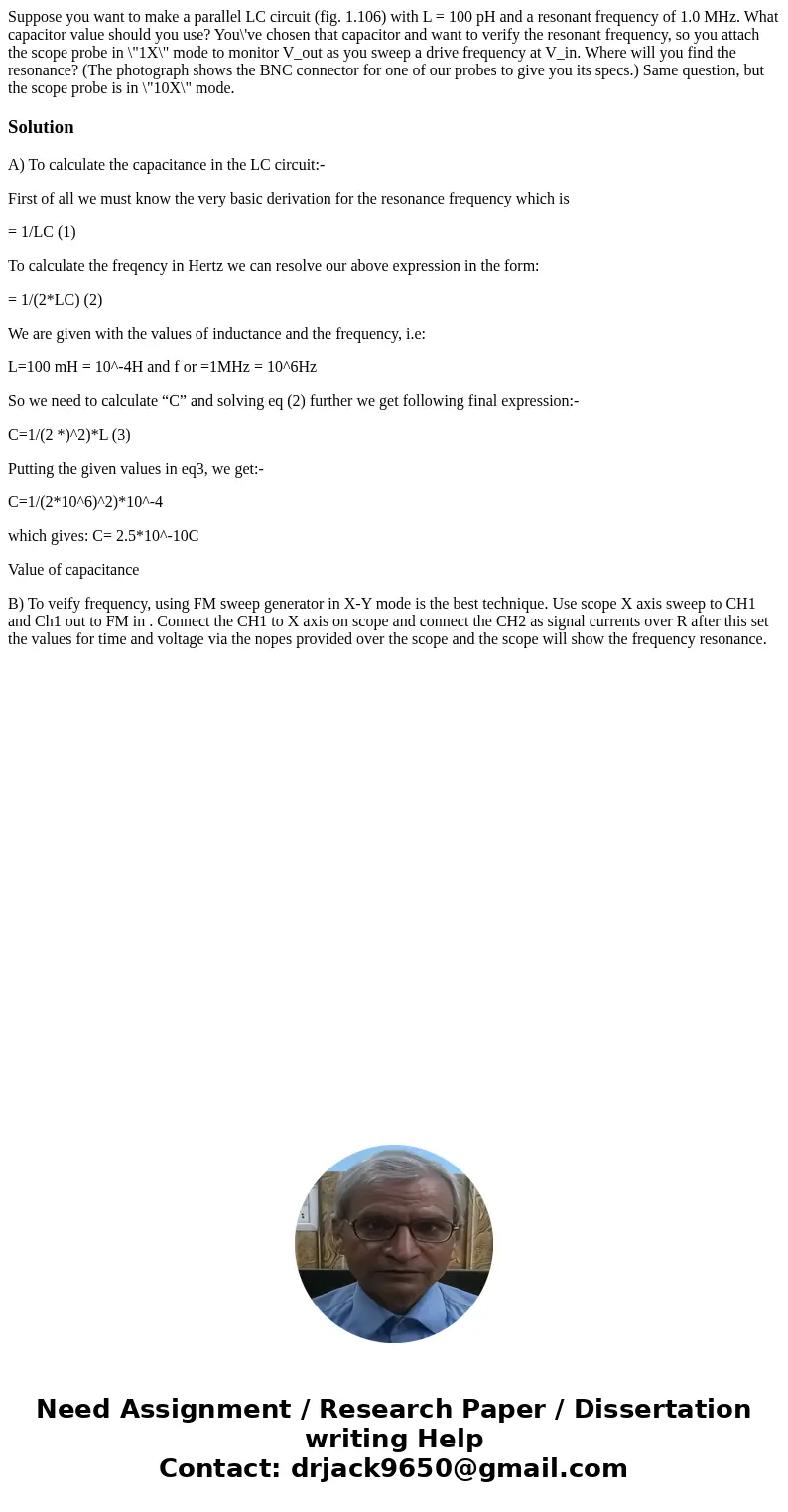Suppose you want to make a parallel LC circuit fig 1106 with
Solution
A) To calculate the capacitance in the LC circuit:-
First of all we must know the very basic derivation for the resonance frequency which is
= 1/LC (1)
To calculate the freqency in Hertz we can resolve our above expression in the form:
= 1/(2*LC) (2)
We are given with the values of inductance and the frequency, i.e:
L=100 mH = 10^-4H and f or =1MHz = 10^6Hz
So we need to calculate “C” and solving eq (2) further we get following final expression:-
C=1/(2 *)^2)*L (3)
Putting the given values in eq3, we get:-
C=1/(2*10^6)^2)*10^-4
which gives: C= 2.5*10^-10C
Value of capacitance
B) To veify frequency, using FM sweep generator in X-Y mode is the best technique. Use scope X axis sweep to CH1 and Ch1 out to FM in . Connect the CH1 to X axis on scope and connect the CH2 as signal currents over R after this set the values for time and voltage via the nopes provided over the scope and the scope will show the frequency resonance.

 Homework Sourse
Homework Sourse